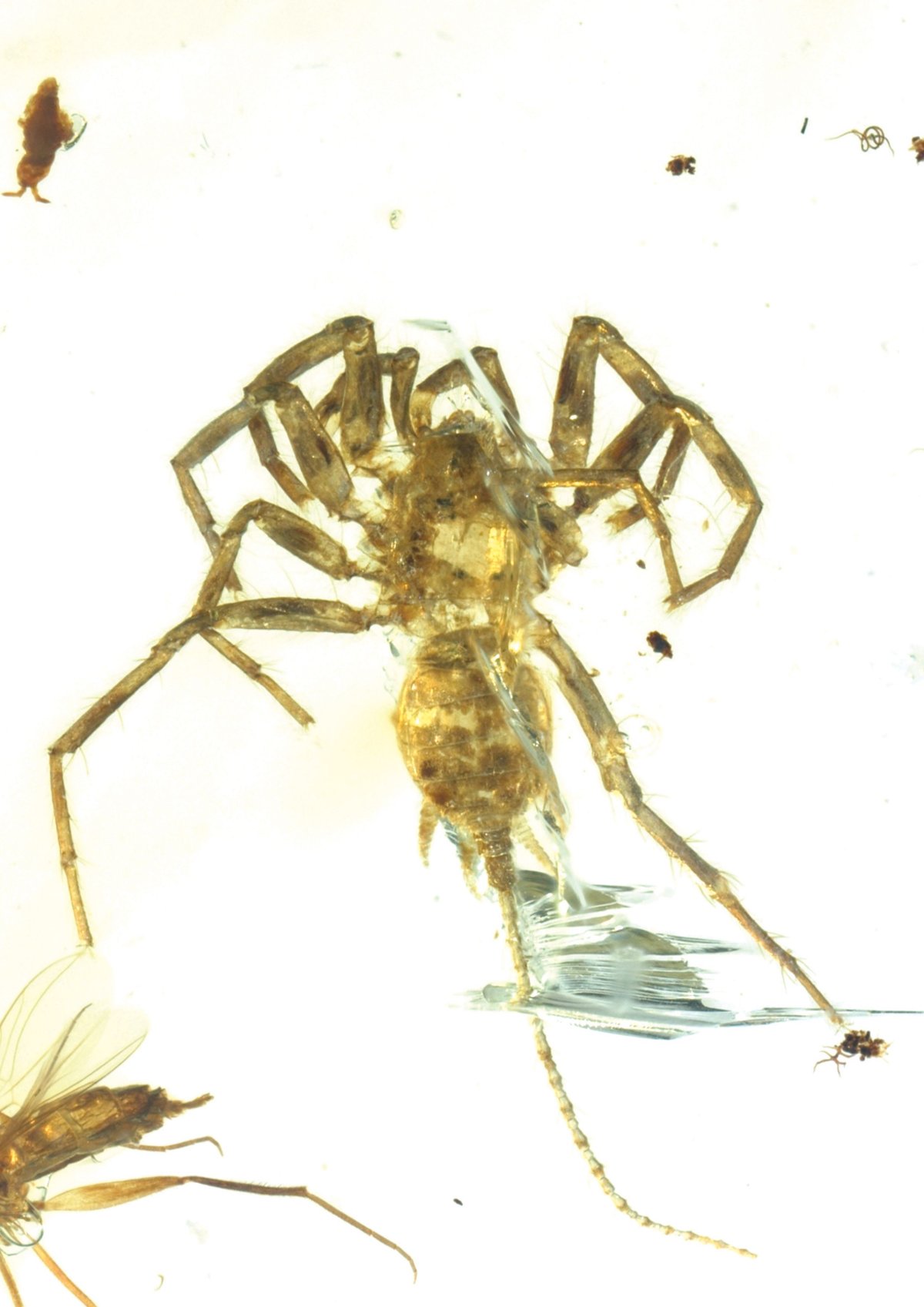
Scared of spiders? How about scorpions? Scientists may have just discovered your worst nightmare. A 100-million-year-old arachnid preserved in amber doesn't just have eight legs, but the tail of a scorpion too.
Named Chimerarachne yingi after the Chimera of Greek mythology—a lion, goat and serpent hybrid—the creature will help scientists understand the origin of these much-feared critters. Both scorpions and this fossilized bug are part of an arachnid group related to true spiders.
Scientists say it's possible that the creatures are still scuttling through the forests of Myanmar, where the specimen was discovered. Paul Seldon of the University of Kansas, co-author of one of two papers on the species published in Nature Ecology and Evolution, said in a statement: "It makes us wonder if these may still be alive today. We haven't found them, but some of these forests aren't that well-studied, and it's only a tiny creature."

Tree-dwelling silk-spinners
Researchers think the spiders lived among the trees because of their amber coffins. Seldon explained: "Amber is fossilized resin, so for a spider to have become trapped, it may well have lived under bark or in the moss at the foot of a tree."
The spider had spinnerets to make silk like modern spiders, but probably didn't spin the intricate webs we see today.
Its scorpion-like tail, Seldon said, was likely used to help the tiny spiders interpret the world around them. "Any sort of flagelliform appendage tends to be like an antenna…It's for sensing the environment. Animals that have a long whippy tail tend to have it for sensory purposes."
The four specimens discovered only stretched up to one tenth of an inch in length—double if you include the tail.
Uncertain origins
The fossil sheds light on the origins of modern spiders and their ancient ancestors. The creature fills the gap between ancient arachnids with tails and true spiders, Ricardo Perez-De-La-Fuente of the Oxford Museum of Natural History, told the BBC. He added: "There are many surprises still waiting to be unearthed in the fossil record. Like most unexpected findings in palaeontology it probably brings more questions than answers, but questions are what keep things exciting and push the boundaries of science."
For now, researchers disagree on the exact placement of the part-spider, part-scorpion critter. Seldon's team believes it could be one of the first true spiders, while the team behind the second study think it's an extinct relative.
True spider or not, this animal might still haunt your dreams tonight.
Uncommon Knowledge
Newsweek is committed to challenging conventional wisdom and finding connections in the search for common ground.
Newsweek is committed to challenging conventional wisdom and finding connections in the search for common ground.
About the writer
Katherine Hignett is a reporter based in London. She currently covers current affairs, health and science. Prior to joining Newsweek ... Read more
To read how Newsweek uses AI as a newsroom tool, Click here.








